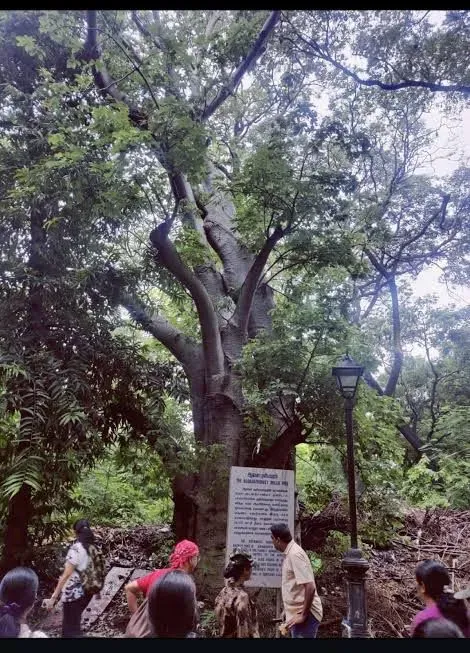What is the ‘Heritage Trees’ initiative in Chennai?

Synopsis
Key Takeaways
- Chennai's heritage trees initiative aims to protect urban biodiversity.
- 104 trees have been identified for heritage status.
- The program highlights the ecological and cultural significance of ancient trees.
- The initiative seeks to promote environmental awareness among the youth.
- Future plans include expanding the initiative and conducting awareness campaigns.
Chennai, June 1 (NationPress) In a groundbreaking initiative aimed at safeguarding urban biodiversity, forest officials in Chennai, Tamil Nadu, have launched a program to identify and protect rare, ancient, and ecologically crucial trees by classifying them as ‘heritage trees’.
According to officials, these trees will receive enhanced protection due to their ecological, cultural, historical, and aesthetic significance.
Tamil Nadu Forest Secretary Supriya Sahu unveiled the initiative, emphasizing its purpose of conserving living botanical landmarks that have quietly observed the city’s evolution and environmental changes.
“These heritage trees are an essential component of our urban ecosystem. They link us to our natural heritage and merit both recognition and protection,” she stated.
The project, initially centered on Chennai, is a joint effort involving the Chennai Forest Division, renowned botanist Professor D. Narasimhan, and the local environmental NGO Nizhal Trust. The team meticulously surveyed to identify trees that qualify for heritage status, focusing on criteria like age, ecological importance, historical significance, and cultural relevance.
A dedicated task force, under the leadership of District Forest Officer V.A. Saravanan, conducted the assessments and found 104 trees throughout Chennai that meet the heritage criteria. These trees belong to diverse species and are located in various settings, including school premises, temple grounds, and historic sites.
A standout is the Adyar Banyan Tree, believed to be over 450 years old. Situated near the Theosophical Society campus, this monumental tree is regarded as a symbol of Chennai’s natural heritage and cultural richness. Its vast canopy and intricate root structure render it a natural marvel and an integral part of the local ecosystem.
Another significant tree is the African Baobab located on a school campus in Rajapalayam, Virudhunagar district, thought to have been planted more than a century ago by Arab travelers.
A second Baobab can also be found on the grounds of the Theosophical Society in Chennai, symbolizing Tamil Nadu’s extensive history of cross-cultural botanical exchanges.
The forest department intends to broaden the initiative to other districts in the near future. Upcoming plans include creating a detailed database of heritage trees, erecting informative signage, and conducting awareness initiatives within schools and local communities.
“Our aim encompasses not just conservation, but also education,” Sahu remarked. “By acknowledging these trees as heritage icons, we aspire to foster a deeper environmental awareness and pride among citizens, especially the youth.”
This initiative is poised to serve as a model for urban ecological conservation throughout India.









